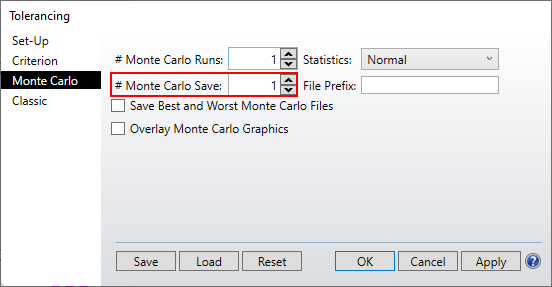I do not understand why the nominal RMS criterion is different from the RMS sport radius displayed in the Spot diagram tab. Maybe there is a link with compensators in the tolerance data editor. How is calculated the nominal RMS Spot Radius compared to the estimated Spot radius ?
Moreover, is it possible to work with the estimated RMS spot radius instead of the nominal RMS Spot radius with a Monte Carlo Analysis ?
Thank you in advance




